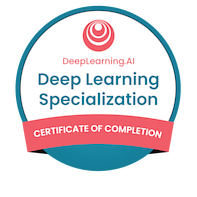
Employment
- Department for Work and Pensions
(2022–)
Data Scientist (TDA, 2023–2024)
Associate Data Scientist (2022–) - Department for Environment, Food and Rural Affairs
(2021–2022)
Statistical Officer - University of York
(2017–2021)
Research Assistant in Molecular Dynamics Simulations (2021)
Postgraduate Research Assistant in Biophysics (2017–2021)
Graduate Teaching Assistant (casual work, 2018–2020)
Qualifications, memberships, & awards
Dr George D. Watson-Hyde MPhys (Hons) PhD (Ebor.), MInstP
Academic qualifications
- PhD Physics
University of York • 2017–2021
Thesis: “Atomistic simulation of interactions between DNA and integration host factor”
Supervisors: Agnes Noy, Mark Leake - MPhys (Hons) Theoretical Physics
(with first-class honours)
University of York • 2013–2017
Dissertation: “Probing DNA intercalation through targeted molecular dynamics simulation of ellipticine and anthracene-derived ligands”
Supervisor: Robert Greenall
Certificates & Courses
- Deep Learning
Specialization
DeepLearning.AI (Coursera) • 2023
Courses: Structuring Machine Learning Projects, Improving Deep Neural Networks, Convolutional Neural Networks, Sequence Models, Neural Networks and Deep Learning - Machine Learning
Specialization
DeepLearning.AI & Stanford University (Coursera) • 2023
Courses: Supervised Machine Learning, Advanced Learning Algorithms, Unsupervised Learning, Recommenders, Reinforcement Learning
- Certified Professional Data
Scientist
DataCamp • 2022 (expires 2024)
Assessed: Data management, Exploratory analysis, Statistical experimentation, Model development, Coding for production environments, Communication and reporting - Machine Learning
Stanford University (Coursera) • 2021
Topics: Logistic regression, Artificial neural networks, Machine learning algorithms, Machine learning - Introduction to Machine
Learning
Duke University (Coursera) • 2021
Topics: Natural language processing, Convolutional neural networks, Machine learning, Python programming, PyTorch - Managing Big Data with
MySQL
Duke University (Coursera) • 2021
Topics: Data analysis, MySQL, Teradata, SQL
Memberships
- Member, Institute of Physics (MInstP)
Awards
- Shortlisted:
Graduate Teaching Assistant of the Year,
Physics Awards 2019
University of York • 1 May 2019 - Shortlisted:
Postgraduate Makes a Difference,
Physics Awards 2019
University of York • 1 May 2019 - Best Talk,
Physics Postgraduate Conference 2018
University of York • 21 September 2017
(Prize sponsored by the Institute of Physics)
Publications
- Watson G D,
Chan E W,
Leake M C,
Noy A
2022
“Structural interplay between DNA-shape protein recognition and supercoiling: the case of IHF”
Computational and Structural Biotechnology Journal 20 5264–74
doi:10.1016/j.csbj.2022.09.020
- Watson G,
Velasco-Berrelleza V,
Noy A
2022
“Atomistic Molecular Dynamics Simulations of DNA in Complex 3D Arrangements for Comparison with Lower Resolution Structural Experiments”
in Leake M C (ed.)
Chromosome Architecture, Methods in Molecular Biology 2476 95–109
doi:10.1007/978-1-0716-2221-6_8 - Yoshua S B†,
Watson G D†,
Howard J A L,
Velasco-Berrelleza V,
Leake M C,
Noy A
2021
“Integration host factor bends and bridges DNA in a multiplicity of binding modes with varying specificity”
Nucleic Acids Research 49 8684–98
doi:10.1093/nar/gkab641
- Watson G D 2021 “Atomistic simulation of interactions between DNA and integration host factor” (PhD thesis) University of York uk.bl.ethos.832618
Key to symbols:
- † These authors contributed equally to this work.
Talks
Internal
- Biological Physics Seminar Series
University of York • 22 May 2020
“Simulating the shape of DNA” - Physics Postgraduate Conference 2018
University of York • 21 September 2018
“Molecular dynamics simulation of supercoiled DNA minicircles”
Winner: Best Talk - Regular Physics of Life Group & Biological Physics Group meetings
University of York • 2018–2021
Poster presentations
External
- 6th Molecular Microbiology
Meeting
Newcastle University • 17–18 June 2019
“Atomistic simulations unveil the influence of DNA topology on IHF–DNA interaction”
PDF - The Physics of Microorganisms
II
Institute of Physics • 8 April 2019
“Atomistic simulations unveil the influence of DNA topology on IHF–DNA interaction”
PDF • Blog - PoLNET2 ECR Summer School: New Approaches to Biomolecular Structure,
Dynamics and
Function
Durham University • 16–20 July 2018
“Atomistic simulation of DNA supercoiling”
PDF
Internal
- Biophysics of Infection & Immunity Symposium:
From Molecules to Cells to Tissues
University of York • 22 November 2019
“Atomistic simulations reveal modality of IHF–DNA binding”
PDF - Physics Postgraduate Conference 2019
University of York • 26–27 September 2019
“Atomistic simulation of DNA supercoiling” - BPSI Autumn Symposium 2019:
Modelling the Ecology of Complex Communities
University of York • 26 September 2019
“Atomistic simulation of DNA supercoiling” - BPSI Spring Symposium 2019:
Light and Life — A Molecular Perspective
University of York • 19 May 2019
“Atomistic simulations unveil the influence of DNA topology on IHF–DNA interaction”
PDF - PoLNET2 2018 Symposium:
Molecules, Mechanics, Medicine and
More!
University of York • 10 December 2018
“The influence of DNA topology on IHF–DNA interaction unveiled by atomic simulations”
PDF - BPSI Summer Symposium 2018:
Business as Usual?
University of York • 28 June 2018
“The influence of DNA topology on IHF–DNA interaction unveiled by atomic simulations”
PDF - BPSI Spring Symposium 2018: Digital Healthcare
University of York • 28 June 2018
“Atomistic simulation of DNA supercoiling”
PDF
Other conferences attended
- 7th Annual CCPBioSim Conference: Frontiers in Biomolecular
Simulation
University of Bristol • 4–6 September 2019
Teaching
- Molecular Simulation (practical demonstration)
University of York • 2018–2020
Provide support and assistance to third-year students during molecular dynamics workshop sessions - Advanced Computational Laboratory (practical demonstration)
University of York • 2018–2019
Supervised, guided, and assisted students developing various programs for physical simulation, in a variety of languages including Fortran, during third-year computational laboratory; led an experiment in single-particle plasma simulation, which included giving a short introductory lecture
Shortlisted: GTA of the Year
Outreach
- York Festival of Ideas Fringe Family Fun Afternoon
University of York • June 2019
“DNA Detectives”
Hosted interactive DNA bracelets and DNA origami activities for children aged 5–11, explaining the structure and function of DNA appropriately - York Researchers’ Night
(YorNight)
University of York • November 2018
“Meet Your Molecules in VR”
Performed interactive virtual reality demonstrations of biological molecules and 3D visualisation techniques in biophysics to members of the public of various ages and backgrounds at a well attended event
END
